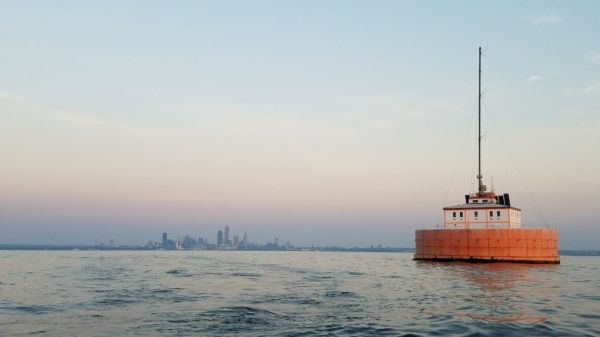Four years ago, NOAA’s Great Lakes Environmental Research Laboratory (GLERL) and the Cooperative Institute for Great Lakes Research (CIGLR) began providing an Experimental Lake Erie Hypoxia Forecast Model to warn stakeholders of low-oxygen upwelling events that can cause water quality problems for over 2 million residents of northern Ohio. Now in its fifth year, this forecast model has turned out to serve additional purposes that NOAA’s scientists hadn’t even considered – including maintaining sustainable fisheries and solving a smelly mystery!
Hypoxia – a state of low oxygen – occurs in the deep waters of Lake Erie’s central basin in July through September of most years. Low-oxygen water is an unfavorable habitat for fish, and may kill bottom-dwelling organisms that provide food for fish. While the hypoxic water generally stays near the lake floor, changes in wind and water currents can create upwelling events, in which this zone of low oxygen is brought to the surface along the coast.
Continue reading at NOAA Great Lakes Environmental Research Laboratory
Image via NOAA Great Lakes Environmental Research Laboratory


